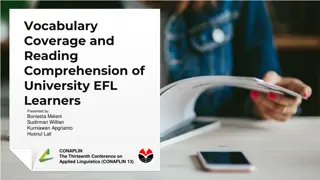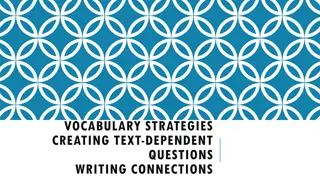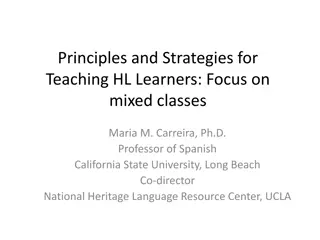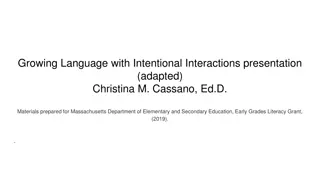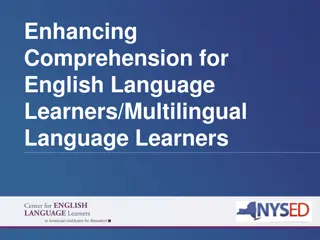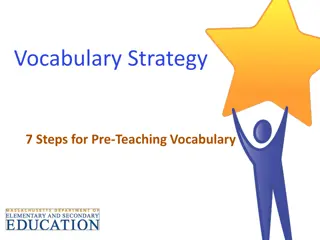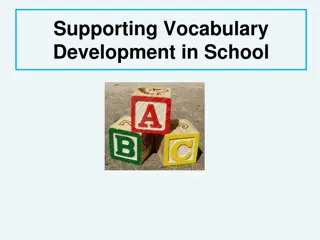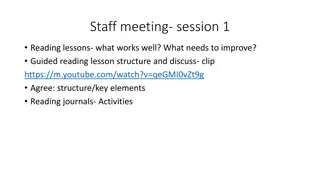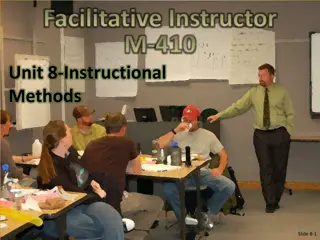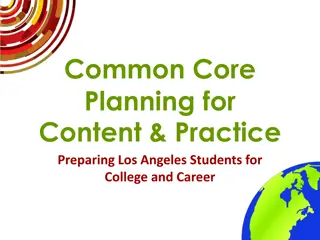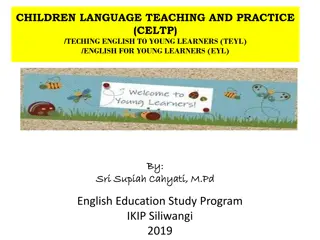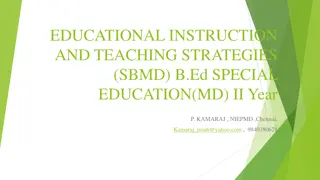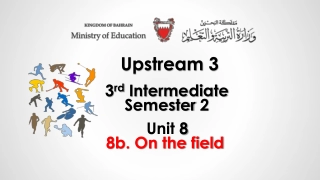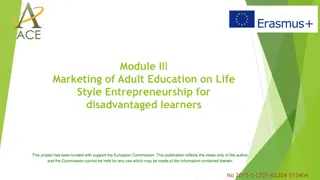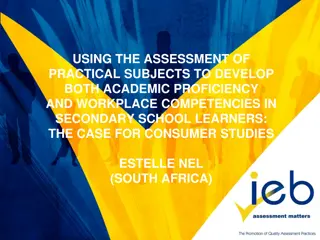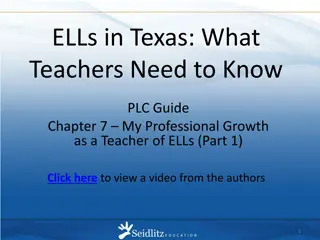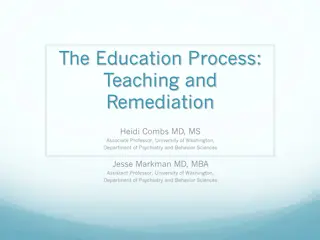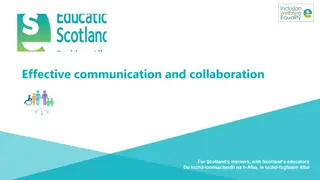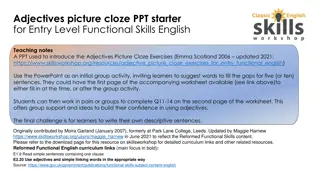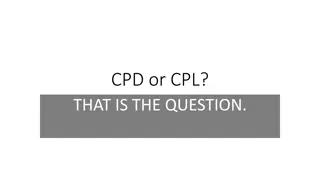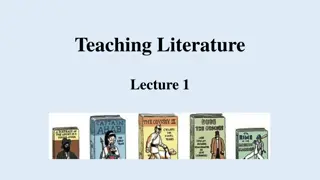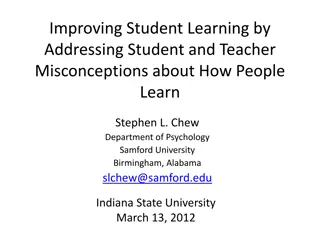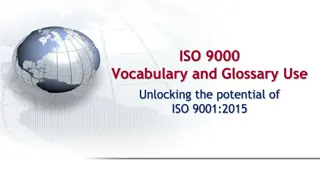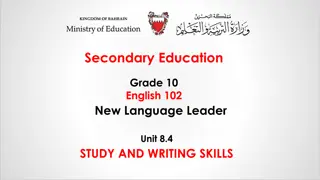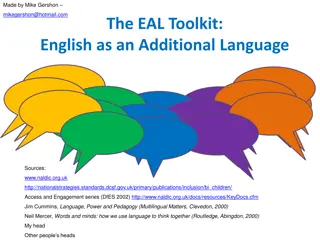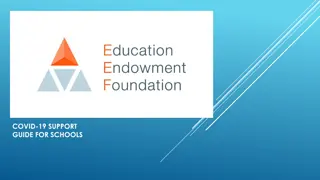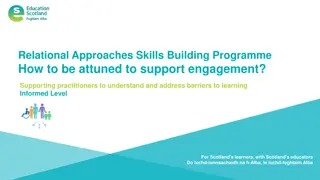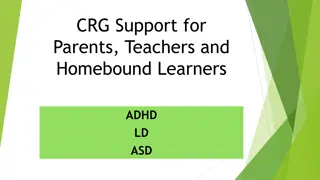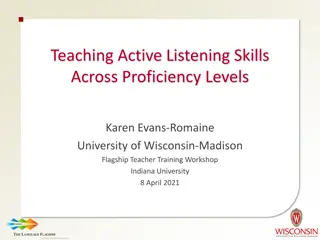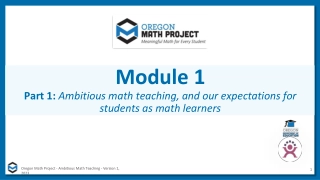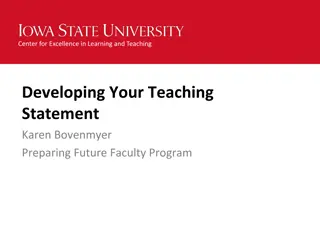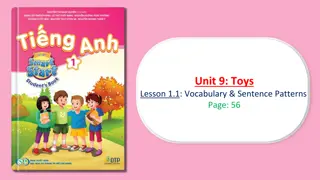Effective Strategies for Teaching Vocabulary to Early Learners
Guide for English Reading Skills Teacher Training focusing on building vocabulary for early learners. Tips include using games, visuals, and active read-aloud techniques to teach new words effectively. Emphasizes the importance of using examples suitable for students' age and providing sentence frames for practice. Strategies like teaching important words before reading and engaging students in interactive activities enhance vocabulary learning.
Download Presentation

Please find below an Image/Link to download the presentation.
The content on the website is provided AS IS for your information and personal use only. It may not be sold, licensed, or shared on other websites without obtaining consent from the author. Download presentation by click this link. If you encounter any issues during the download, it is possible that the publisher has removed the file from their server.
E N D
Presentation Transcript
English Reading Skills Teacher Training A guide for teaching English reading to early learners
VOCABULARY What is it? Vocabulary is the words we use to speak, write and read.We need a strong vocabulary to share the ideas in our heads.
TEACHING TIPS: VOCABULARY A teacher should focus heavily on building vocabulary. When you teach your students new words, use games and activities that allow them to read, draw, write and repeat these words as much as possible. Use examples that fit the age of your students. If you teach the word happy to younger students, your example might be, My friend gave me a toy. I felt happy. But you would not use that example with an older student. Create a sentence frame for the students to use. Sentence frames help students use the word quickly and in a complete thought. They are simply ready-made sentences for the students to use! Here are sentence frames for the word happy: I feel happy when __________________ makes me feel happy. ________________.
TEACHING TIPS: VOCABULARY Use visuals and all the senses. When you teach a new word, show a picture. If you teach the word bug, show students a picture of one or bring one in! If you teach the word happy, show them what happiness looks like. Have them act it out. Use your body, face and senses whenever you can. Once you teach a new word, use if often. The more students use a new word, the more likely they are to learn and remember it. Use it many ways. Use vocabulary across content. If you teach other subjects, such as math and life skills, use the English words in those classes too. The more students use new words in different situations, the more likely they are to learn them. Finish the new word lesson with a question or quick activity. If anger is the new word, you could ask, What do people look like when they are angry? Can you show me? Then have each student show anger.
VOCABULARY STRATEGY First Teach Important Words & Ideas Before reading a story, your students should understand the words and ideas. How to Use Make a vocabulary list for key words in the text. Post them in the classroom. When to Use Say them with the students. Use this strategy before a reading lesson. Talk about the meanings. Use this with the whole class. Also explain any new ideas in the story.
VOCABULARY STRATEGY Active Read-Aloud How to Use Active Read-Aloud When reading aloud to your class, ask questions about a new or important word. Let them answer in whatever language they want. Correct or add to the students' answers. Teacher: What does it mean to hate somebody? Student: You don t like them. Patricia: Yes. But a little or a lot? Student: A lot. You don t like them a lot. When to Use Explain the meaning of the word. Give a definition, synonyms and examples. This strategy can be used for both Vocabulary and Comprehension. Use visuals. Teachers can use their faces, objects, pictures, sounds, or physical movements to show word meaning while they read aloud. (This does not stop the story as much as the others.) Use this strategy before and after a reading lesson. Use this with the whole class.
VOCABULARY STRATEGY Word Map A Word Map is like a picture. It organizes information in a visual way. Word Maps help students to think about new words in different ways. How to Use a Word Map 1. On the board or paper, write the new word in the middle of the map. 2. Tell students to think about the word. 3. Then, they fill in the rest of the map with a definition, sample sentences, related words (synonyms), unrelated words (antonyms), and a picture (or many pictures) to explain this new word. 4. Do this as a whole class or in small groups. Help your class as they work. When to Use Use Word Maps before, during and after reading. Use Word Maps with the whole class, in small groups or with individual students.
STRATEGY: VOCABULARY Word Map How to Use a Word Map cold, near, winter, coat, snow hot, far, gas, summer, burn words related to sun On the board or paper, write the new word in the middle of the map. words NOT related to sun Tell students to think about the word. sun Then they fill in the rest of the map with a definition, sentences using the word, related words, unrelated words, and pictures to explain the word. I like the sun. The sun is hot. The sun is not near to me. Do this as a whole class or in small groups. sentences using the word sun picture of the sun Help your students as they work.
ASSESSMENT: VOCABULARY Assessing vocabulary in your students is very important. Here are some ways to assess vocabulary of early learners and advanced learners. Match Words with Visuals This type of assessment is very helpful for early learners and learners with a very low English level. 1. Choose the target words. Target words are the words you want to test. 2. Then, collect or draw pictures to go with each word. You can also use objects. Say the word and have the student pick the correct picture or object. 3. An0ther visual can be your face and body. For example, let s say the target words are happy, anger and sad. You can make faces showing these feelings. The students must match the feeling with the correct word.
ASSESSMENT: VOCABULARY Interviews Chose the target vocabulary (the words you want to test) and ask the student questions about it, for example: Can you use this word in a sentence? What word in your language means the same thing? Can you use your face and body to show the meaning of the word?


